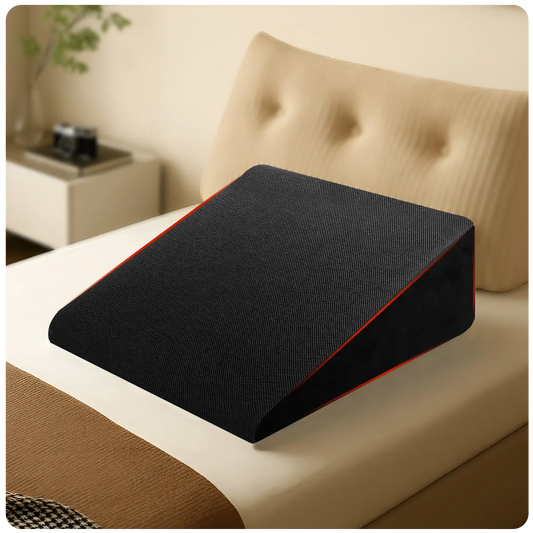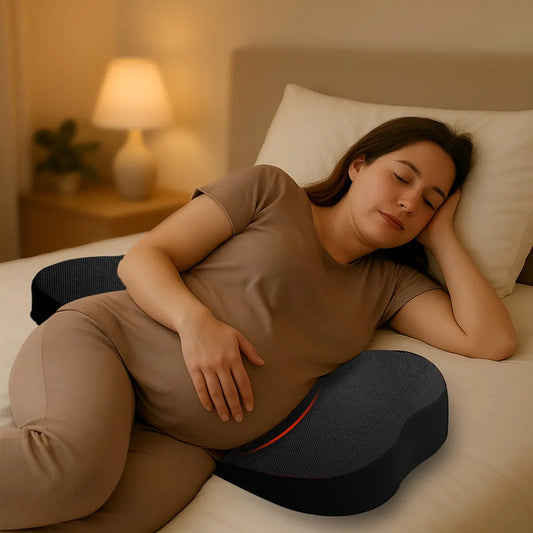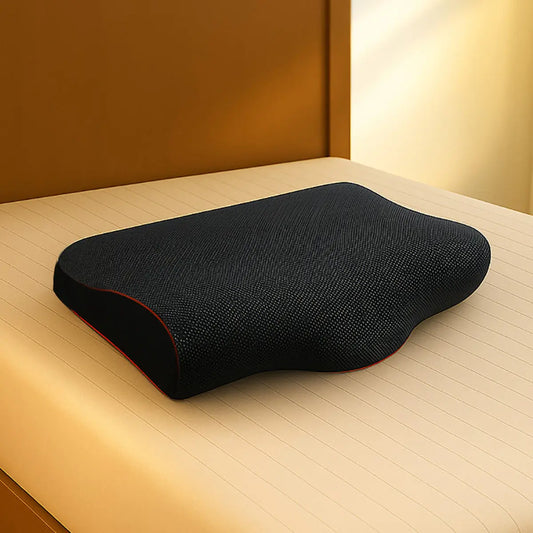
Best Way to Sleep on a Plane Without Neck Pain
Share
The Harsh Reality of Travel Fatigue – Why Your Neck Suffers on the Go?

Long journeys can take a serious toll on the body, causing discomfort that lingers long after the trip ends. Hours spent in cramped seats with minimal movement, awkward sleeping positions, and poor posture contribute to stiffness, muscle strain, and even long-term spinal misalignment. Whether you're enduring a ✈️ red-eye flight, embarking on a 🚗 cross-country road trip, or settling in for a 🚆 long train journey, travelers often find themselves waking up feeling more exhausted, sore, and tense than before they even started their trip. Without proper support and ergonomic adjustments, these travel discomforts can lead to chronic pain, making every journey a struggle rather than an adventure.

❓ Why Does Travel Cause Neck Pain?
🔹 Unsupported Sleep Positions – Resting your head against a hard window, slumping forward onto a tray table, or letting your head tilt at an unnatural angle can put excessive strain on your neck muscles. Over time, this leads to stiffness, discomfort, and even long-term posture issues. Without proper support, your neck is left vulnerable to awkward angles that cause muscle fatigue and pain.
🔹 Prolonged Sitting – Sitting in a fixed position for extended hours—whether on a plane, train, or car—reduces blood circulation and puts continuous pressure on your neck and spine. This can result in muscle stiffness, joint discomfort, and poor posture. Without regular movement or proper back and neck support, prolonged sitting can contribute to long-term musculoskeletal issues and chronic pain.
🔹 Sudden Jerks & Movements – Whether it's turbulence mid-flight, sudden braking in a car, or a bumpy train ride, abrupt movements can cause your neck to jolt forward or sideways. These sudden, uncontrolled motions strain the muscles, leading to soreness, stiffness, and potential misalignment. Without adequate support, such as a well-fitted travel pillow, your neck is at risk of enduring unnecessary stress throughout your journey.

💪 Exercises to Reduce Neck Pain While Traveling
🧍♂️ 1. Chin Tucks – Gently press your chin inward toward your neck to align your head with your spine. This helps correct forward head posture and relieve neck strain. Hold for 5 seconds, then relax and repeat 10 times for optimal results.
🔄 2. Neck Rolls – Slowly tilt your head from side to side, then gently roll it in smooth circular motions. This simple movement helps release built-up tension, improve mobility, and reduce stiffness caused by prolonged sitting. Perform 5-10 slow rolls in each direction.
🤷♂️ 3. Shoulder Shrugs – Lift both shoulders up toward your ears, hold for a few seconds, then release and relax. This movement helps relieve tension in the upper back, shoulders, and neck, especially after hours of sitting in one position. Repeat 10-15 times to ease stiffness.
💺 4. Seated Stretches – While sitting, gently tilt your ear toward your shoulder until you feel a stretch along the side of your neck. Hold for 10-15 seconds, then switch sides. This stretch improves neck flexibility and reduces tightness from long travel hours.
🪑 5. Posture Adjustments – Ensure your lower back is fully supported, your feet are flat on the floor, and your spine remains in a neutral position. Using a lumbar support pillow or adjusting your seat can help maintain proper posture and prevent back and neck pain during long trips.

✨ Additional Tips for Neck Pain Prevention
💧 Stay Hydrated – Dehydration can cause muscles to tighten, increasing stiffness and discomfort during long trips. Drinking enough water helps keep your muscles relaxed and reduces the risk of cramps and fatigue. Always keep a bottle of water handy to stay refreshed.
🚶♂️ Take Frequent Breaks – Sitting for long periods can lead to stiffness and poor circulation. If possible, stand up, stretch, or take a short walk every hour to keep your muscles loose, improve blood flow, and reduce tension in your neck and back.
🪑 Adjust Your Seat – Keeping your seat at the right recline maintains natural spinal alignment and reduces unnecessary pressure on your lower back and neck. Adjust your seat position to ensure proper lumbar support and avoid slouching, which can lead to long-term discomfort.
🛏️ Use a Supportive Pillow – A well-designed travel pillow provides proper neck support, prevents unnatural head tilting, and helps you rest comfortably. Choosing a memory foam or ergonomic pillow can significantly reduce strain on your neck and shoulders during long journeys.

🛏️ Finding the Right Support
Traveling without proper neck support can result in lingering pain and stiffness that lasts for days, making your journey uncomfortable and recovery slow. That’s why investing in a well-designed travel pillow can be a game-changer, providing the necessary support to keep your neck properly aligned and ensuring a more restful, pain-free travel experience.
The Trajectory Travel Neck Pillow is ergonomically designed to support your neck in a neutral position, preventing unnecessary strain. Made with memory foam and breathable fabric, it ensures both comfort and posture support, whether you're in a ✈️ plane, 🚗 car, or 🚆 train.




